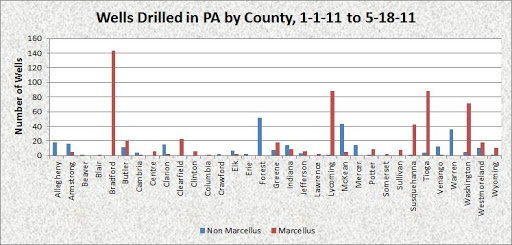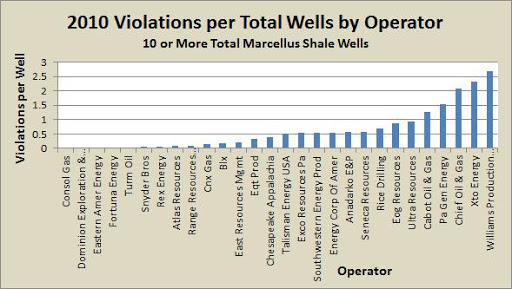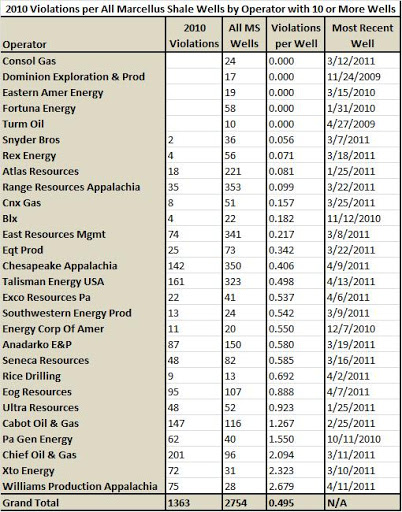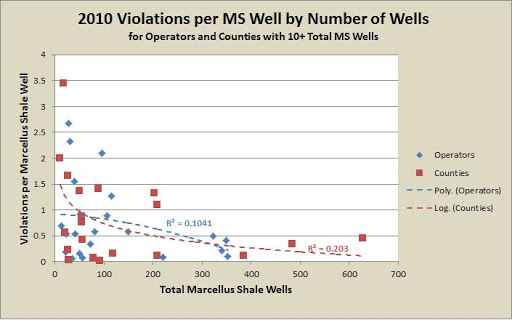Problems with Abandoned and Orphaned Wells

Left: Cabin Run orphaned oil well, Morgan County, Ohio. Many of the older oil and gas wells were either perfunctorily plugged, or else not at all. Right: The Pennsylvania DEP thinks this Bradford Township explosion in McKean County, PA might have been due to a nearby abandoned gas well that was drilled in 1881.
In April of 2000, the Pennsylvania Department of Environmental Protection (DEP) released a plan for dealing with the approximately 8,000 abandoned and orphaned oil and gas wells throughout the Commonwealth. This report singled out 550 wells that were especially problematic, and of those, 129 were flagged as the highest priority, with a point score of 30 or greater on their internal scale.
Eleven years later, there are over 8,500 abandoned and orphaned wells, and 186 with a point score of 30 or greater. Most likely, this increase doesn’t suggest newly abandoned wells so much as the discovery of additional old ones. After all, according to Independant Petroleum Association of America estimates, over 325,000 oil and gas wells were drilled statewide between 1859 and 2000. The DEP has no information on more than half of those wells–about 184,000. Therefore, the actual number of abandoned and orphaned wells in Pennsylvania could be much higher than the estimates provided above.
Abandoned wells are those that have been out of production for a year or more, and orphaned wells are wells that were abandoned prior to 1985, and from which the current landholder or operator didn’t receive any economic benefits. When wells are designated as orphaned, the DEP is responsible for plugging them. As of February, there are 6,251 wells classified as orphaned and 2,272 abandoned wells.
Reasons for Concern
Obviously, the prospects of houses suddenly exploding, as in the picture above, is reason enough to be concerned, and yet there are a variety of ways in which abandoned oil and gas wells can impact Pennsylvania’s environment and the health and well being of our residents. Most unplugged wells release some amount of oil, gas, condensate, or brine, which can kill vegetation, damage fragile riparian ecosystems, and contaminate aquifers. There is also the possibility of injury due to the sudden release of pressure. Some abandoned wells are 30 inch diameter open holes that are obviously a danger for children to fall into.
 May 30, 2011 sinkhole in Allentown, PA
May 30, 2011 sinkhole in Allentown, PA
There is also the possibility that the presence of wells, whether active or or not, will aggravate unstable geologic formations, which are fairly common in Pennsylvania, due to mining activities in the west and soluble limestone formations in the east. This recent Allentown sinkhole was reportedly caused by a water leak, and caused significant property damage.
To give an example of the potential impact of abandoned oil and gas wells, here are some of the comments from the Abandoned and Orphaned Wells Program, with corresponding point scores:
Comments on abandoned wells and their corresponding point scores.
It is not always clear why a well was given a particular priority rating. Indeed, there are many instances where ratings are zero, but the comments give reason for concern, such as “Oil in water supply” and “Well intact, near implement dealer facility, is a fire hazard.” Additionally, less than 15 percent of the abandoned wells listed give any comment at all.
Incidents in McKean County
Recent explosion incidents in McKean County, PA. Please click on the gray compass rose and double chevron to hide those menus.
The Bradford Township fire mentioned above (the more southern of the two), is about half a mile from the nearest abandoned well on the list. However, the suspected well, Rogers 9, was apparently only 300 feet away. Presumably, this well was not known about until the incident occurred. Rogers 9 was drilled in 1881.
The other incident, in Foster Township, is at the northern edge of a tight cluster of recent drilling activity. It is entirely possible that there are abandoned wells in that region too, but again, nothing is on our list in the immediate vicinity.
This information leads one to suspect that one of the fires was probably due to recent activity, while the other was caused by a long-forgotten well. Whether or not that was the case, it is clear that drilling holes in the earth near where people live can have an adverse effect for a very long time.
Well Plugging
While well plugging technology has obviously improved over the years, that doesn’t necessarily mean that it is always done right. A single $25,000 bond currently is the only insurance that an operator will plug all of their wells statewide, once they are no longer in production. In most cases, that is probably adequate, since there are non-monetary incentives for the operator to stay in good graces with the DEP. However, there are numerous smaller operators with wells still in production, including some residents who have their own private wells.
In these cases, the carrot of getting the bond money returned may not match the cost of plugging the well properly, especially if multiple wells are involved. In this 1998 document, the DEP put the average cost of plugging a well between $6,000 and $22,000. Last year, the DEP plugged 11 wells in Erie County for a cost of $137,348, or a cost of about $12,500 each.
According to the Bradford Era, over 2,700 wells have already been plugged statewide under the program. In McKean County, more than 950 wells have been plugged since 1989, at a cost of over $6.5 million.
As mentioned above, the DEP assumes responsibility for plugging the orphaned wells. The money for this comes from $150 fees added to oil permit applications, and $250 fees for gas permits. Money is clearly a limiting factor in how many wells the DEP can to plug. Those 11 Erie County wells required funds from 550 new gas permits. If those wells represent the average current price for plugging a well, then the 6,251 orphaned wells still on the list would cost over $78 million to plug, requiring the permit fees from 312,550 new wells. And that is still not including the approximately 184,000 abandoned wells that the DEP doesn’t even know about.
Maybe it is time for a new strategy.














